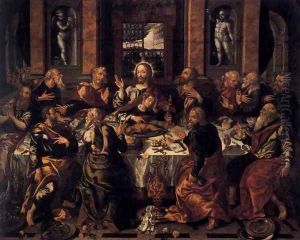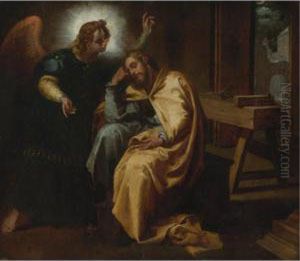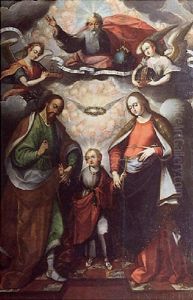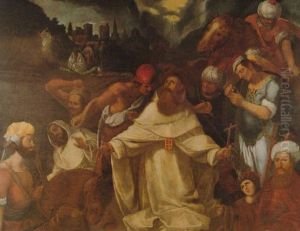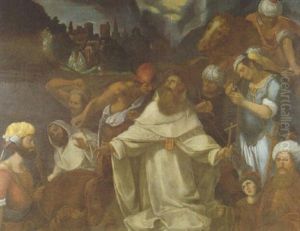Alonso Vazquez Paintings
Alonso Vázquez was a Spanish painter and illustrator, born in Ronda, Spain, in 1565. His life and work are significant for understanding the transition in Spanish art from the Mannerist to the early Baroque period. Vázquez began his artistic career in Seville, a vibrant center for the arts in 16th-century Spain, where he was likely influenced by the works of contemporary artists such as Luis de Vargas and Francisco Pacheco. However, it was in Italy, where he moved early in his career, that Vázquez's style began to mature, absorbing the influences of Italian Renaissance and Mannerist artists.
After spending several years in Italy, Vázquez returned to Spain, bringing with him the Italian influences that would mark his work. Settling in Seville, he became a prolific artist, creating religious works for churches and convents, as well as for private patrons. His paintings are characterized by their dramatic intensity, use of light and shadow, and a focus on the emotional expressions of his subjects, features that heralded the Baroque style that would come to dominate Spanish art in the 17th century.
Vázquez's contributions to Spanish art are not limited to his paintings. He was also a skilled illustrator, working on several important commissions, including illustrations for books. This aspect of his work reflects the broader cultural movements of the Spanish Golden Age, a period of flourishing in arts and literature.
Despite his influence and the quality of his work, Alonso Vázquez has not received the same level of recognition as some of his contemporaries, such as El Greco or Zurbarán. However, his paintings and illustrations remain an important part of the study of Spanish art history, providing insight into the stylistic transitions of the period and the interplay between Spanish and Italian artistic traditions.
Vázquez's life and career were relatively short; he died in Seville in 1608. Nevertheless, his works continued to influence Spanish painters well into the Baroque period, marking him as a significant figure in the transition between the Renaissance and Baroque styles in Spain. His legacy is preserved in several Spanish institutions, including the Museo de Bellas Artes in Seville, where some of his most important works are housed.
